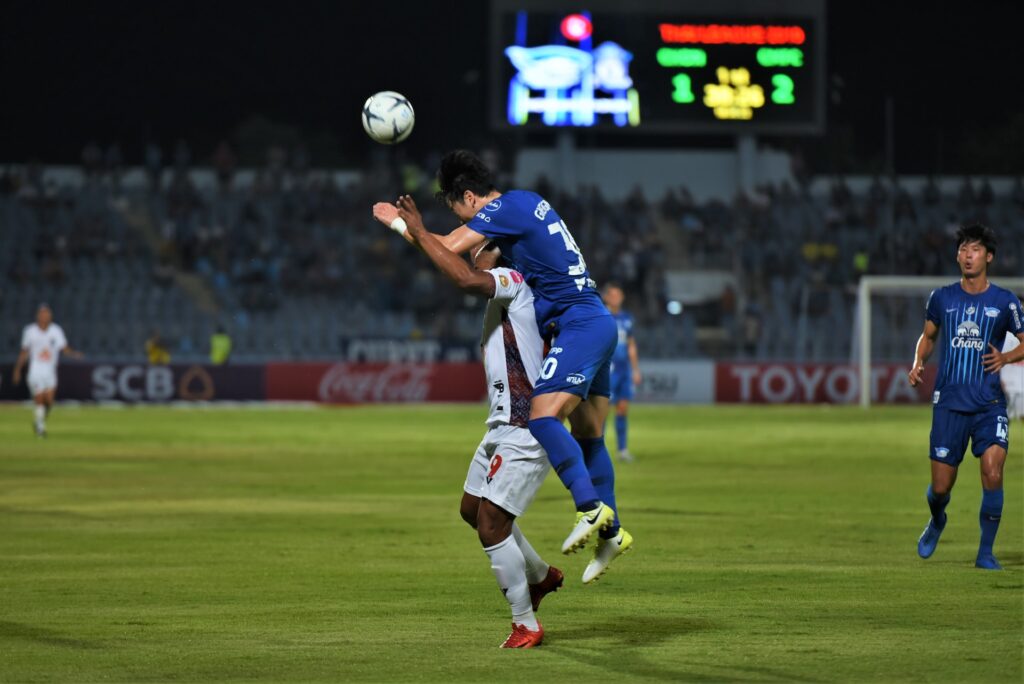Table of Contents
- Route one in soccer defined
- Early practitioners of route one soccer
- Wimbledon FC: The Crazy Gang
- Is route one in soccer effective?
- Who are the key players in a route one system?
- Do any teams play route one today?
- Recap: Route one in soccer explained
In spite of its effectiveness, route one in soccer doesn’t have the best reputation. Teams that employ this approach are often called “long-ball merchants”, which often oversimplifies this approach to the game.
Here, we offer an insight into route one soccer and explain the emergence of this unique approach to playing the beautiful game.
Route one in soccer defined
Route one in soccer refers to an approach to the game that sees a team move the ball forwards as quickly as possible. Route one practitioners employ a “target man” as a central forward to hold the ball up, who then brings other teammates into play to form an attack.
Often, route one soccer is tied to long-ball soccer, where defenders punt the ball long towards a sole striker, with their teammates then rushing around them to support an attack.
As a result of this direct approach, many soccer purists complain about route one soccer and suggest that it’s not entertaining.
But the reality is that several teams have used route one soccer effectively in the past, and it can undoubtedly be a useful approach. Read on to find out more about route one in soccer and how to employ this approach effectively.
Early practitioners of route one soccer
Route one soccer certainly isn’t anything new, and it has been employed by coaches for decades. In fact, in the 60s and 70s, route one soccer was more common than it is today due to the terrible state of many soccer pitches, which made passing the ball much more difficult.
But the team that made route one soccer popular in European soccer was Wimbledon FC, also known as the crazy gang, coached by Bobby Gould.
Wimbledon FC: The Crazy Gang
If you ask any British soccer fan about a route one approach to the beautiful game, they will almost certainly refer to Wimbledon FC.
In the late 1980s, Wimbledon adopted an approach to the game that was referred to by many fans and journalists as “anti-football.” But it was extremely effective.
The team was built on physical strength and hard work, with figures like Vinnie Jones and Lawrie Sanchez personifying Wimbledon’s work ethic and strength in the tackle.
But they were also blessed with several quality technicians, such as Dennis Wise, who could accurately play the ball forward to target man John Fashanu.
Nicknamed “the Crazy Gang” for many of their antics off the field, Wimbledon won the 1988 FA Cup Final with their route one approach after beating Liverpool. To this day, it’s still regarded as one of the greatest Cup upsets in history and shows just how effective route one soccer can be.
Is route one in soccer effective?
There’s no doubt about it – route one soccer can be extremely effective, as Wimbledon FC proved in the late 1980s. But it depends on the attributes and skillset of the players within a team, as is the case with every tactical approach.
Many consider route one soccer to be old school and the simplest way to play the game. After all, the approach is premised on the fact that you cut out the midfield and play the ball from front to back as quickly as possible.
If your team is hard-working and there are several strong and tall players in your side, then employing a route one approach can certainly be advantageous.
On the contrary, if your team is made up predominantly of smaller technicians, a tiki taka approach to soccer might be a better option!
Who are the key players in a route one system?

The key player in any route one system is the target man. The target man plays as the central striker and is tasked with holding the ball up at the business end of the pitch.
The reason why the target man is so crucial is that they need to be able to win the ball in the air and retain possession for their teammates. Then, with the ball under control, the target man can then bring in other players to launch an attack and cause problems for their opponents.
Wingers also play an important role in a route one system, as they typically have to cross the ball into the box from a deep position.
What’s more, defenders need to have good distribution to be able to get the ball up to the target man effectively. If defenders aren’t able to make long passes, the entire system can fall apart!
Do any teams play route one today?
In modern soccer, most teams prefer a possession-based approach to the game and like to move the ball from front to back via the midfield.
However, there are some teams that have played a route one style at the highest level of the game in recent years.
A great example would be Tony Pulis’ Stoke City team, who performed so well in the English Premier League, with Peter Crouch as the target man. They were route one experts who upset a lot of the big teams with their direct approach to the game.
Sean Dyche’s Burnley team also played a route one game of sorts, relying on the physical qualities of target man Chris Wood to help them succeed.
The sad reality is that Stoke & Burnley were often criticised for their approach, even though it worked well for them and kept them in the EPL for several seasons.
Ultimately, if you employ a route one approach well, it can be a great way to play to your strengths and exploit the weaknesses of the opposition.
Recap: Route one in soccer explained
Route one soccer is all about getting the ball forward as quickly as possible while utilising the physical prowess of a target man to bring others into play at the business end of the field.
Popularised by Wimbledon FC in the 1980s, route one is still used by some soccer coaches today and can be an effective way of setting up your team if you play to your strengths.

